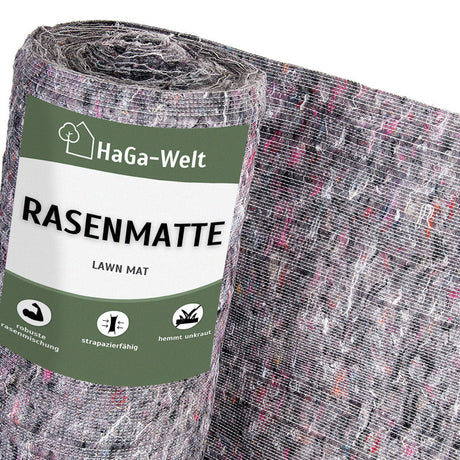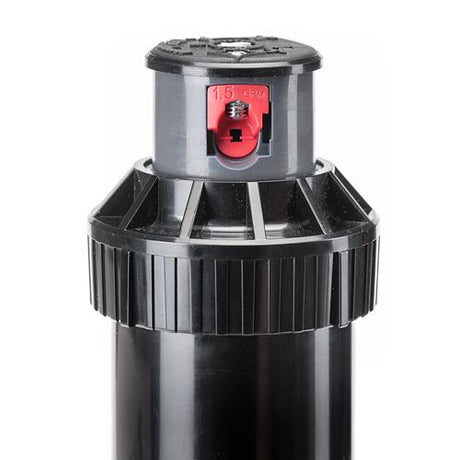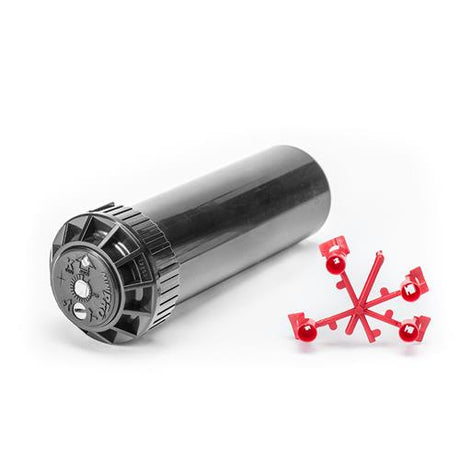May is considered one of the most beautiful months of the gardening year. The days get longer, temperatures rise, and plant growth really gets going. For hobby gardeners, this is a particularly busy time, with numerous tasks to be done. To help you optimally prepare your garden for the coming season, this blog post provides valuable tips on planting new lawns, growing vegetable seedlings outdoors, planting patios and balconies, ornamental grasses, and well-thought-out irrigation planning.
Laying a new lawn
For many gardeners, a lush green lawn is the centerpiece of their garden. In May, there are several options for creating your dream lawn:
-
Sow grass
If you want to create a lawn from scratch, sowing is a cost-effective and flexible method. First, make sure to thoroughly loosen the soil and remove any weeds. Then, spread the grass seed evenly, for example, using a spreader. For optimal germination, you should water the area sufficiently. Regular, light watering during the first few weeks is especially important to prevent the seeds from drying out. -
rolled turf
If you want to see results faster and are willing to invest a little more money, choose rolled turf. This will give you a solid, green surface in no time. Roll out the strips quickly and press them down with a roller to ensure the roots bond well with the subsoil. Even with rolled turf, intensive watering is crucial during the first few weeks to ensure the young grass can grow. -
lawn mat
A lawn mat is a hybrid between seeding and turf: Seeds and fertilizer are already fixed to a fleece or similar material. The advantage of this option is its manageability and even growth. You lay the mats easily like turf and then only need to water them. The mats protect the seeds from being washed away by rain and ensure an even green carpet.

Planting vegetable plants outdoors
As soon as the nights warm up and late frosts no longer threaten, it's the ideal time to plant young plants outdoors. Tomatoes, cucumbers, peppers, and zucchini are just a few of the vegetables you can plant in your garden now. Make sure you have:
- Loosened soil : Loosen the soil well and remove stones and weeds.
- Nutrient supply : Work in mature compost or an organic fertilizer to ensure your young vegetable plants are optimally nourished.
- Planting distances : Always keep enough space between the plants so that they can develop unhindered.
- Plant support : A stick or trellis is recommended, especially for tall plants such as tomatoes.
Regular watering is essential during the first few weeks, as the delicate roots will otherwise dry out quickly. If it does get colder at night, it's best to protect your beds from frost with fleece.

Planting terraces and balconies
Even if you don't have a traditional garden, you can create a colorful floral oasis on your patio or balcony in May. The following plants are particularly suitable:
- Petunias : Undemanding perennials that shine in bright colors all summer long.
- Geraniums : Available in various growth forms and colors, robust and also long-flowering.
- Fuchsias : Lovers of partial shade, they delight with their bell-shaped flowers.
When choosing, consider whether your patio or balcony is sunny or shady. Use well-draining soil and suitable containers with drainage holes. A layer of expanded clay or gravel at the bottom of the planter will help prevent waterlogging and keep the roots healthy.

Planting ornamental grasses
Ornamental grasses bring movement and structure to the flowerbed. In May, you can plant specimens such as fountain grass, blue fescue, or Chinese silver grass. These grasses impress with their diverse growth forms, leaf colors, and delicate stems. When planting, keep in mind:
- Choice of location : Ornamental grasses often prefer sunny to partially shaded locations.
- Soil type : A well-drained, moderately nutrient-rich soil is ideal.
- Planting distance : Give the grasses enough space so that they can fully develop.
- Care : Pruning usually only takes place in spring so that the stalks can serve as natural protection against the cold in winter.
By the way, ornamental grasses are not only suitable for beds, but also look very decorative in larger pots.

Plan irrigation
A well-thought-out irrigation strategy saves you time, water, and hassle. The following systems have proven effective:
-
Rainwater barrel
Collecting rainwater is not only environmentally friendly but also saves money. Place one or more rain barrels on your downspouts to collect as much rain as possible. Use the collected water to water flowerbeds, tubs, or raised beds. -
Drip hoses
Drip hoses direct water directly to the roots, ensuring even and efficient irrigation. They are easy to install in beds or between rows of plants and ensure a constant supply of moisture. -
Pop-up sprinkler
If you have a larger lawn, pop-up sprinklers are a convenient solution. These sprinklers disappear beneath the turf when not in use and automatically extend when water pressure is applied. This allows you to water large areas evenly without having to drag cumbersome hoses across the lawn.
Before installing, consider which areas of your garden need watering, how often, and how intensively. In many cases, it's also worth combining different methods, such as drip lines in the vegetable patch and pop-up sprinklers on the lawn.

Conclusion
With these tips, you'll be perfectly prepared for gardening in May. Make sure to check your plants regularly and inspect them for pests or diseases. With careful planning and a little tact, your lawn will be a lush green, your vegetables will be productive, and your balcony containers and flowerbeds will be a true display of flowers. Enjoy May and be enchanted by the first real rays of sunshine in your garden!






